

13-18-01
Jackson Covered Bridge
Cumberland County
on the National Road (Route US 40)
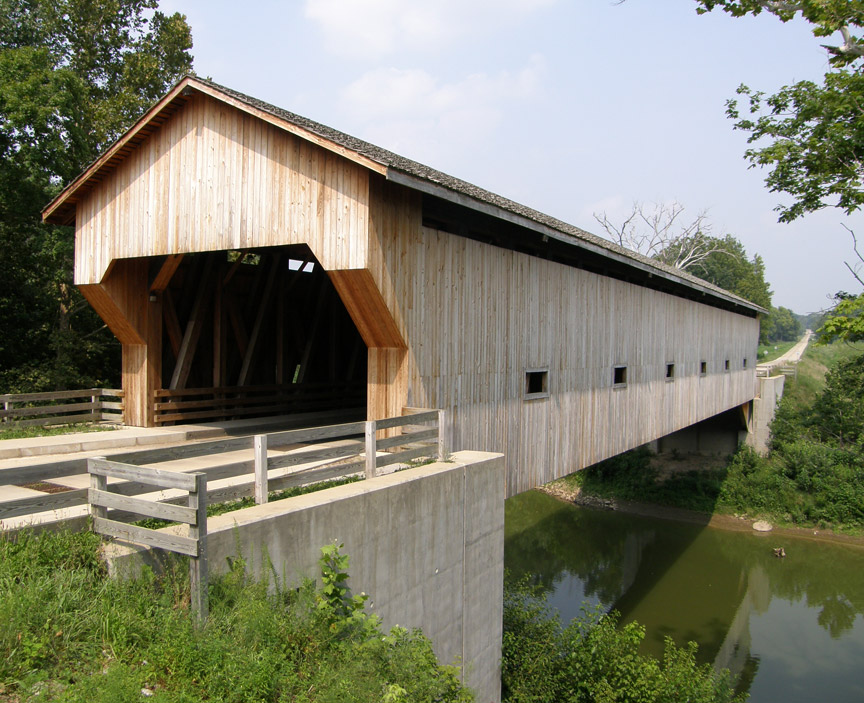
Jackson Covered Bridge
GPS
N39 14.33
W88 11.23
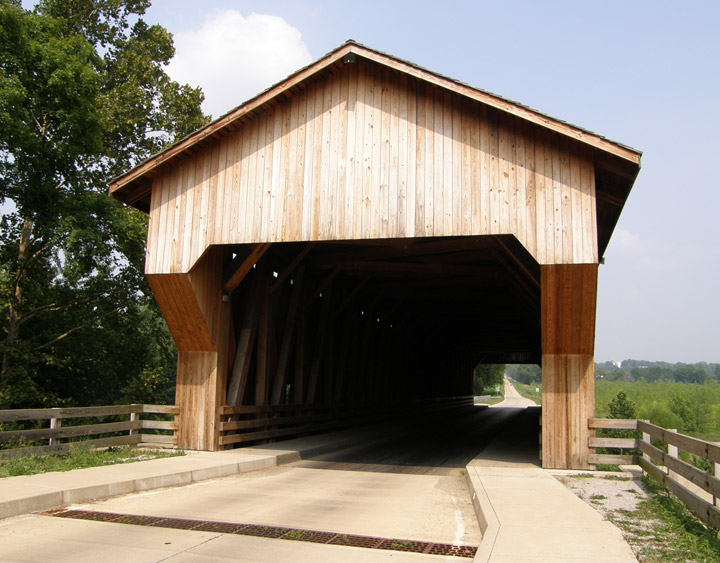
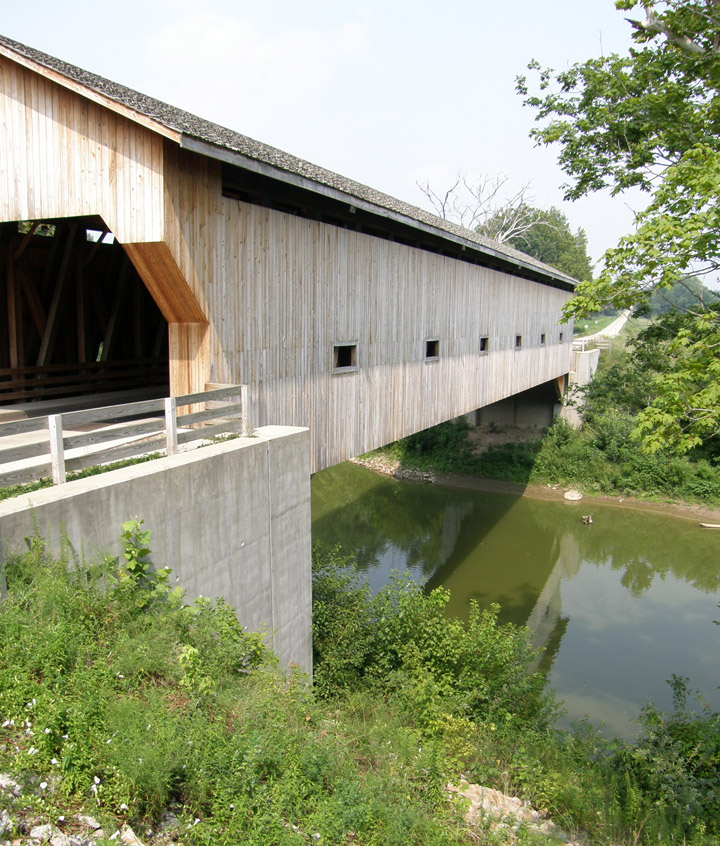
rebuilt in 2000
as part of the National Road Historic project
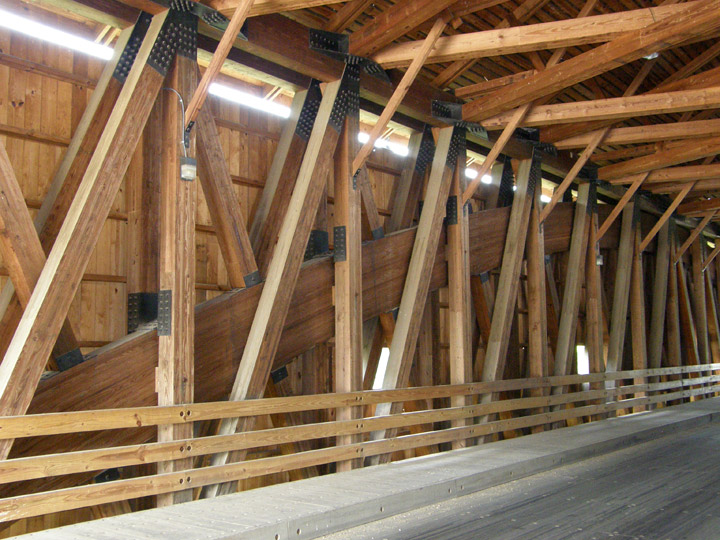
Burr Arch
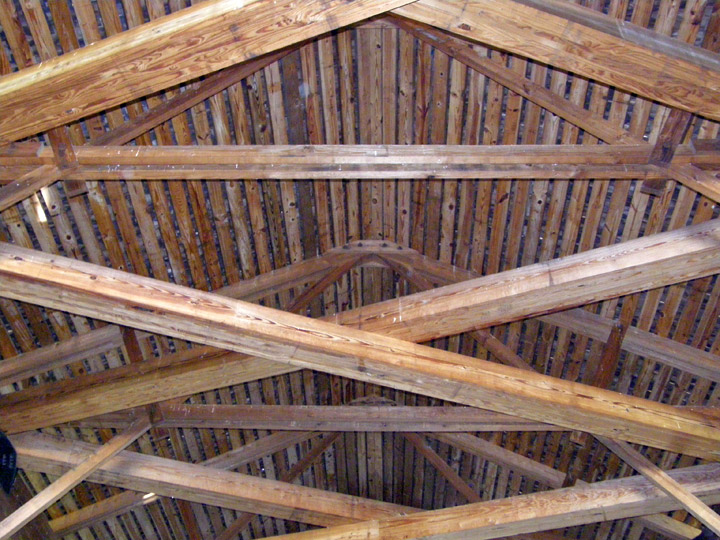
roof interior
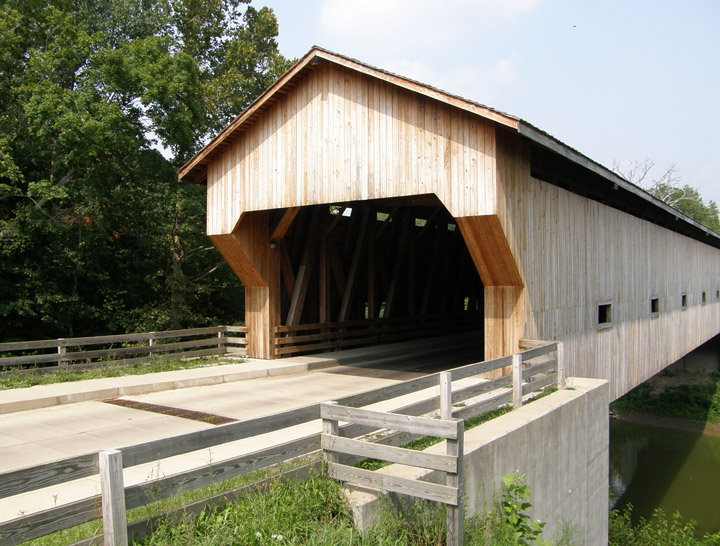
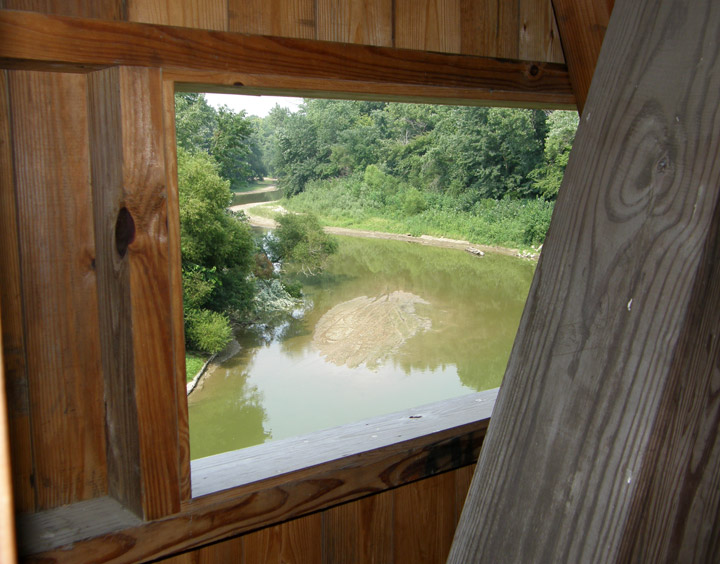
the stream as seen through the side opening
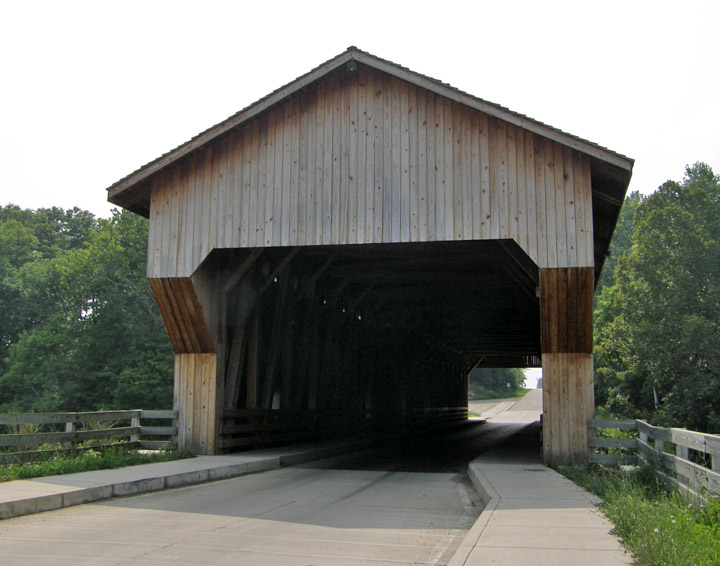
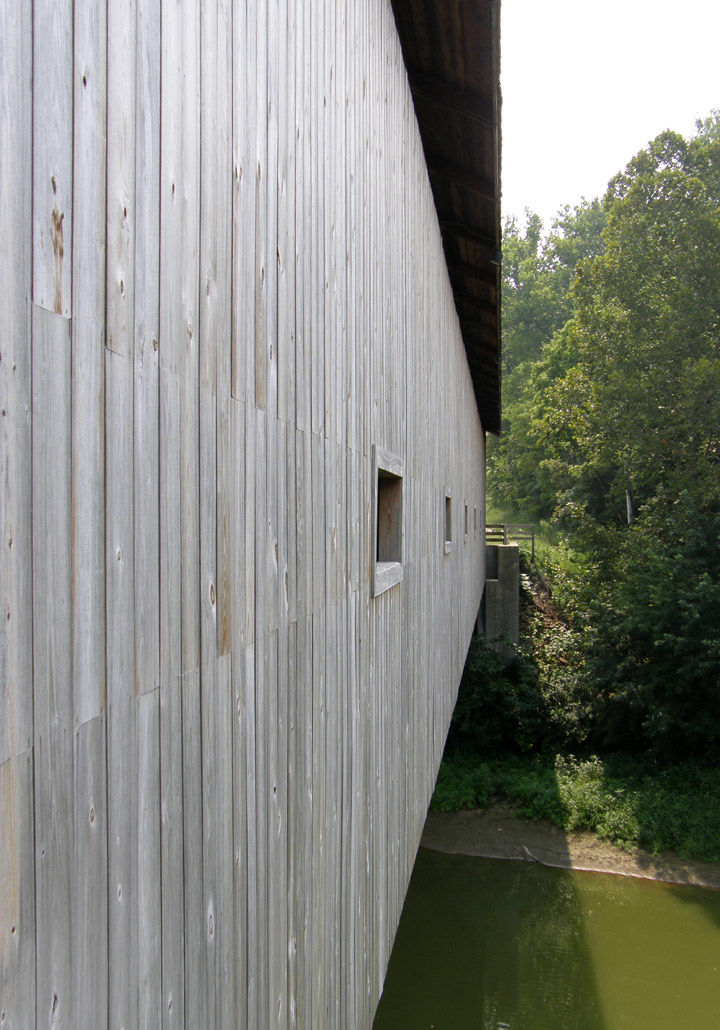
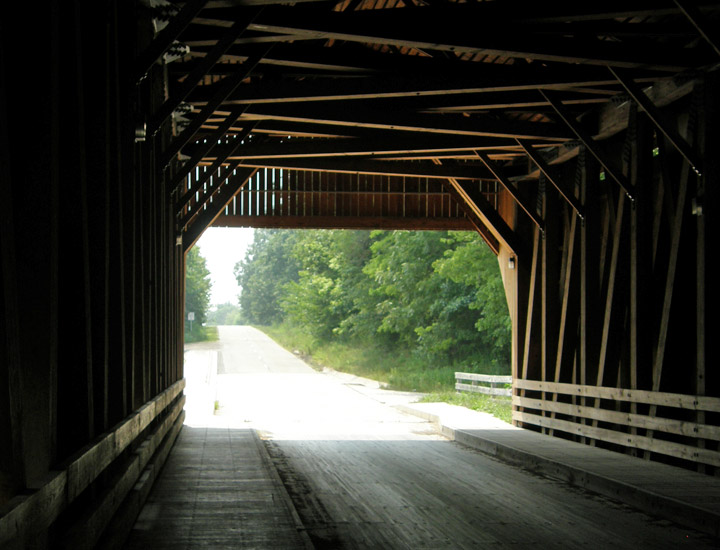
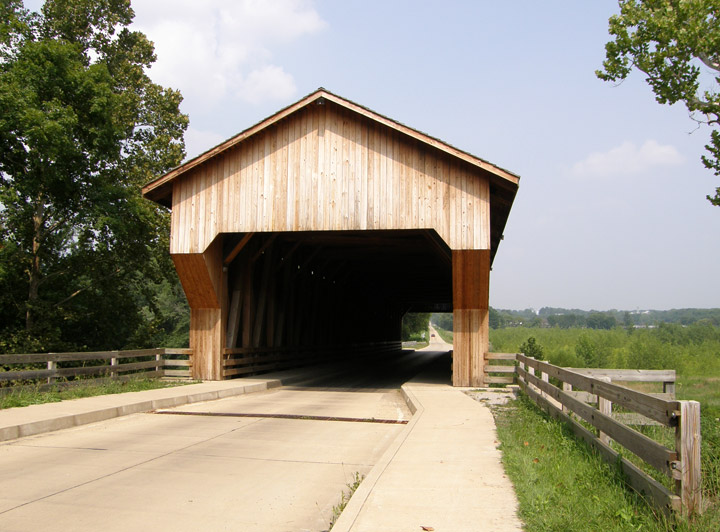

Bridges that served the National Road after the original covered bridge was destroyed in 1865
National Road
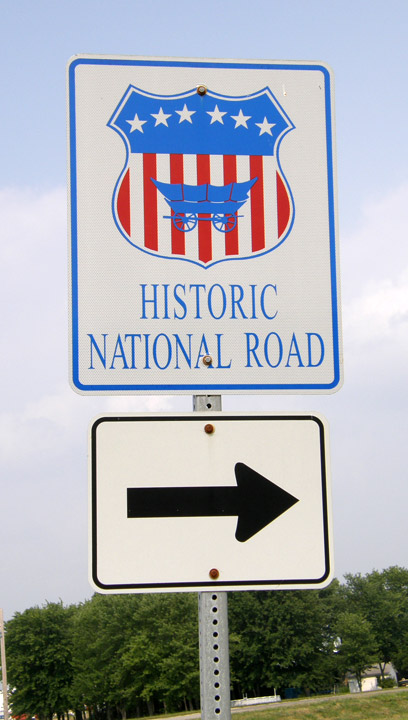
The National Road or Cumberland Road was one of the
first major improved highways in the United States, built by the Federal
Government. Construction began in 1811 at Cumberland, Maryland, on the Potomac
River, and the road reached Wheeling, West Virginia, on the Ohio River in 1818.
Plans were made to continue through St. Louis, Missouri, on the Mississippi
River to Jefferson City, Missouri, but funding ran out and construction stopped
at Vandalia, Illinois in 1839.
A chain of turnpikes connecting Baltimore, Maryland, to the National Road at
Cumberland was completed in 1824, forming what is somewhat erroneously referred
to as an eastern extension of the National Road. In 1835 the road east of
Wheeling was turned over to the states for operation as a turnpike, and came to
be known as the National Pike, a name also applied to the Baltimore extension.
The approximately 620-mile (1000 km) road provided a portage between the Potomac
and Ohio Rivers and a gateway to the West for thousands of settlers. It was the
first road in the U.S. to use the new macadam road surfacing. Today the
alignment is followed by U.S. Highway 40 with only minor realignments. The full
road, as well as its extensions east to Baltimore and west to St. Louis, was
designated "The Historic National Road", an All-American Road, by U.S. Secretary
of Transportation Norman Y. Mineta in 2002.
Text from Wikipedia
Map of Latitude: 39.2388
Longitude: -88.1872